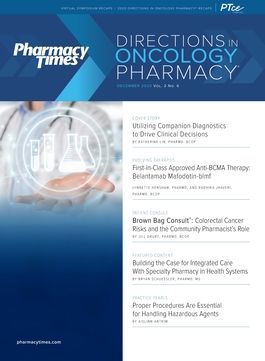Publication
Article
Pharmacy Practice in Focus: Oncology
Pharmacists’ Roles in Addressing Oncology Biosimilar Challenges
Pharmacists’ Roles in Addressing Oncology Biosimilar Challenges
PTCE would like to acknowledge Amgen and Coherus BioSciences, Inc. for their generous support of pharmacist education.
In a virtual symposium titled Adopting Oncology Biosimilars Into Clinical Practice: How Pharmacists Can Help Pave the Way, 2 expert speakers shared strategies for addressing challenges in the implementation and use of biosimilars in patients with cancer. As of September 2020, the FDA had approved 16 biosimilars for oncology-related indications, including supportive care and treatment uses. However, adoption of biosimilars in the United States has been slow. This symposium provided critical information, given the use of biosimilars is estimated to reduce biologic acquisition costs by 10% to 40%.
Raj Duggal, PharmD, BCOP, introduced the topic by defining biologic, biosimilar, interchangeable, and reference products. He explained biosimilar approval is based on sequential comparative studies referred to as the totality of evidence and analyzing structure and function, toxicity in animals, and human pharmacokinetics, pharmacodynamics, clinical efficacy, and safety, including immunogenicity. He addressed several critical concepts including nomenclature, interchangeability, and extrapolation. For a biosimilar to be designated by the FDA as “interchangeable” with the reference product, the biosimilar sponsor must conduct a dedicated switching study and demonstrate there is no loss of safety or efficacy when the biosimilar is switched or alternated with the reference biologic, in addition to conducting postmarketing monitoring. To date, there are no interchangeable biosimilars approved by the FDA. He shared that extrapolation is critical to biosimilars because it bridges all the data collected from 1 indication to all indications originally approved for the reference product, thereby reducing duplicative clinical studies in multiple indications.
Dr Duggal provided an in-depth review of the approval data and availability for biosimilars of rituximab, trastuzumab, bevacizumab, pegfilgrastim, and filgrastim products. He concluded his session by reviewing the pipeline of biosimilars in the clinical trials and biologics with patents expiring in the next few years.
Julie Kennerly-Shah, PharmD, MS, MHA, BCPS, then illuminated some of the barriers to adoption of biosimilars. Some hesitation on the part of prescribers and patients is attributed to lack of knowledge about the products and process for approval as well as the cost of biologics overall regardless of biosimilar status and access to care factors. Dr Kennerly-Shah provided some excellent resources for educating both patients and prescribers and addressing concerns. Payer formulary preference for specific biosimilars contributes to challenges in selecting agents and introduces patient safety concerns for patients. She noted that incorporation of biosimilars in health-system formularies requires multiple steps, including establishing a process for prior authorization, electronic medical record changes, planning for shortages, product changes, and storage of multiple products at risk for look-alike, sound-alike errors. Dr Kennerly-Shah shared 2 distinct cases for discussion. The first case focused on coordination of care around use of pegfilgrastim for prevention of febrile neutropenia. The second case highlighted the anticancer treatment biosimilar trastuzumab and the need for provider engagement in formulary decisions. Drs Kennerly-Shah and Duggal each shared their experiences and offered pearls for working within the multidisciplinary team. They also shared pharmacy operational challenges and potential strategies for safe use of off-formulary biosimilars.







